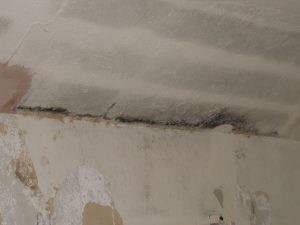
There is no question there’s an abundance of damp, poorly insulated and poorly ventilated homes in New Zealand. These houses are hard to heat, prime for condensation and can be a breeding ground for mould and dust mites. Let’s look at how damp conditions and condensation are created, how the issue impacts us on a national level, who is responsible and what can be done to create warm, dry and healthy homes for every Kiwi.
What are damp and condensation and what causes them?
Damp occurs when an excessive amount of moisture is trapped inside the home. This can lead to musty smells and mould, watermarks and stains forming on walls, ceilings and furniture
Condensation is a result of cool air’s inability to hold as much moisture as warmer air. When warm air cools down — like when it hits cold glass windows — it loses some of its moisture. This causes the moisture to collect or ‘condense’ against the cold window surface and we get condensation.
Excess moisture is created through everyday events like drying washing, cooking, bathing and even breathing. These things see the average family create up to eight litres of moisture in their home, each day.
This isn’t an unreasonable figure, but it needs to be managed with good insulation, ventilation and heating. The problem is that many houses aren’t equipped with the first two, which makes heating difficult and brings about a myriad of issues that impact us as a nation.
The Effects: why do damp and condensation impact the entire country?
Unfortunately, cold and damp homes are unhealthy, make it hard to recover from the likes of the common cold and aid the spread of germs like strep throat, which can lead to serious health issues such as rheumatic fever. In 2016 it was reported 42,000 children are hospitalised each year due to poor quality housing, with 15 of them losing their lives. Each winter, excess winter mortality sees around 1,600 mostly elderly New Zealanders die prematurely, mostly for the same reason, according to Housing Minister Phil Twyford. Aside from the social impact, these figures impact us all as taxpayers and put unnecessary stress on our health system.
The Building Research Association of New Zealand (BRANZ) releases a House Condition Survey report every five years in which it looks at 560 houses across the country and weights findings to represent the total number for NZ. The 2015 report noted 56% of rental properties and 44% of owner-occupied homes were damp with mould present. Results showed mould was most common in bathrooms and affected 20% of living areas and bedrooms, with 30% of rentals showing mould in bedrooms.
Damp homes with poor insulation and ventilation are harder to heat which results in higher costs for tenants and homeowners. When given the choice between the necessities and the cost of heating, poorer tenants often forego heating and become susceptible to the related health risks of a damp and cold home.
What has the government done about the issue?
The previous and current governments have recognised the issue of damp and unhealthy homes. The Healthy Homes legislation was passed in December 2017, meaning by 1 July 2019 underfloor and ceiling insulation must be installed up to regulation standard in all rental homes where it is reasonably practicable.
The MBIE (Ministry of Business, Innovation and Employment) created the Tenancy Compliance and Investigations Team, who following changes to the Residential Tenancies Act can prosecute landlords when their properties breach basic housing standards.
As part of their moves toward ‘Warmer, drier, safer homes’, by 2019 the government will have set new rental housing standards for heating, insulation, ventilation, drainage, draught stopping, moisture and drainage as part of the Healthy Homes legislation.
What can landlords do to their rental properties to help keep them dry and warm?
Ultimately, every NZ home would have double-glazed windows throughout, high levels of insulation, adequate heating source(s), be air tight with an effective ventilation system, and range hood extractor and bathroom extractor fans that vent externally. While not necessarily realistic for all landlords, this would best equip their tenants with the means to keep the home warm, dry and free of mould, also leading to longer tenancies.
While awaiting confirmation of the new Healthy Homes Bill standards, landlords can make sure they meet their current legal requirements under the Residential Tenancies Regulations 2016, then ask themselves if investing in the above will result in lower costs in the long run through lower tenant turnover, less building maintenance and the ability to ask for higher rent payments for a higher spec home.
The other key avenue for landlords is educating their tenants on how to keep the home ventilated and in turn easier to heat. The advice may fall on deaf ears but it’s still worth having the conversation during inspections and other points of contact.
What can tenants do to reduce the effects of condensation?
Understanding what creates excess moisture in the home and how to tackle it is key for tenants to prevent damp and mould growth. Here are some key points for tenants:
- While not always practicable during winter, residents should dry washing outdoors, in a garage or a vented drier rather than inside the house.
- Use a ventilation system, or if there isn’t one, air the home by opening windows and doors.
- Use extractor fans in bathrooms and kitchens, or if there are no fans, open windows to let the moisture escape.
- Keep lids on pots when cooking.
- Remove condensation from windows.
- Use dehumidifiers if home suffers acute condensation.
- Use heating sources to keep home above 18 degrees during day and bedrooms over 16 degrees at night.
Visit the EECA website for further tips about coping with damp and condensation, or drop us a line to speak about keeping your rental property warm and dry.
Image: ‘Living room ceiling’ by Bryn Pinzgauer under CC BY 2.0
